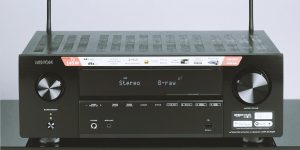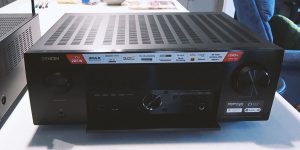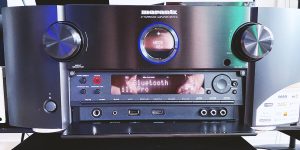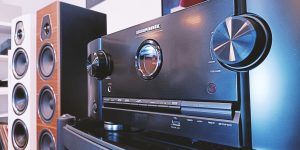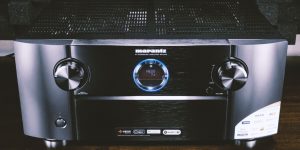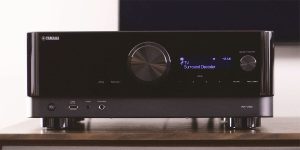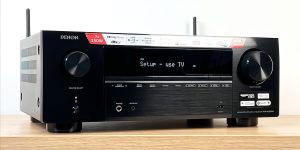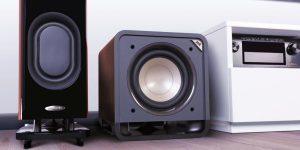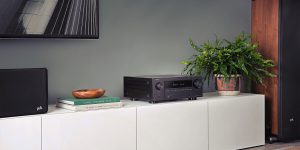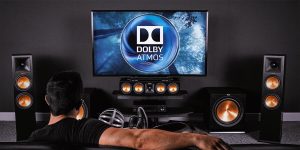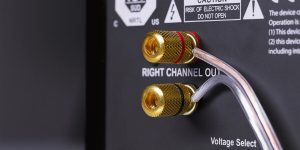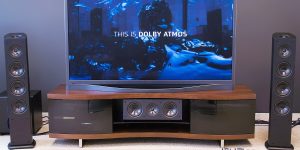Selecting the right stereo receiver to serve as the heart of your home audio system can seem daunting, given the plethora of models on the market. However, keeping a few key considerations in mind that I’m going to share with you will help focus on the ideal unit to match your listening preferences, usage needs, and budget. And, of course, I’ve prepared an overview of the best stereo receivers to make the selection process even easier.
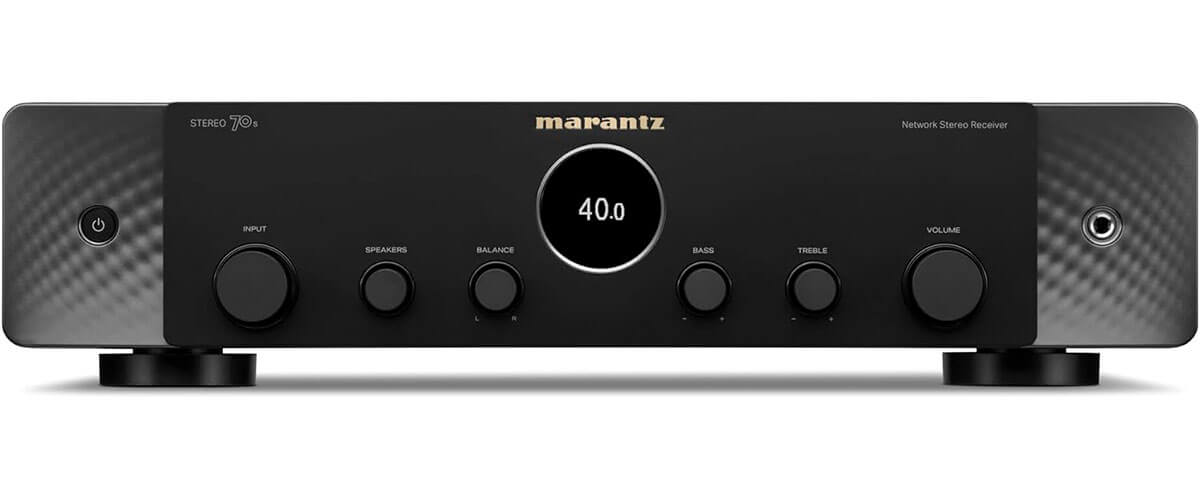
Stereo receivers comparison table
| Name | Channels | Power output | HDMI in/out | Bluetooth/Wi-Fi | Review |
|---|---|---|---|---|---|
| Marantz STEREO 70s best overall | 2.1 | 75W/8 Ohm, 100W/6 Ohm | 6/1 | yes/yes | Review |
| Denon DRA-900H also great | 2.2 | 100W/8 Ohm, 120W/6 Ohm | 6/1 | yes/yes | Review |
| Sony STR-DH190 budget | 2.0 | 100W/8 Ohm | has not | yes/no | Review |
| Yamaha R-N303 | 2.0 | 140W/8 Ohm, 115W/4 Ohm | has not | yes/yes | Review |
Key features to consider when choosing a stereo receiver
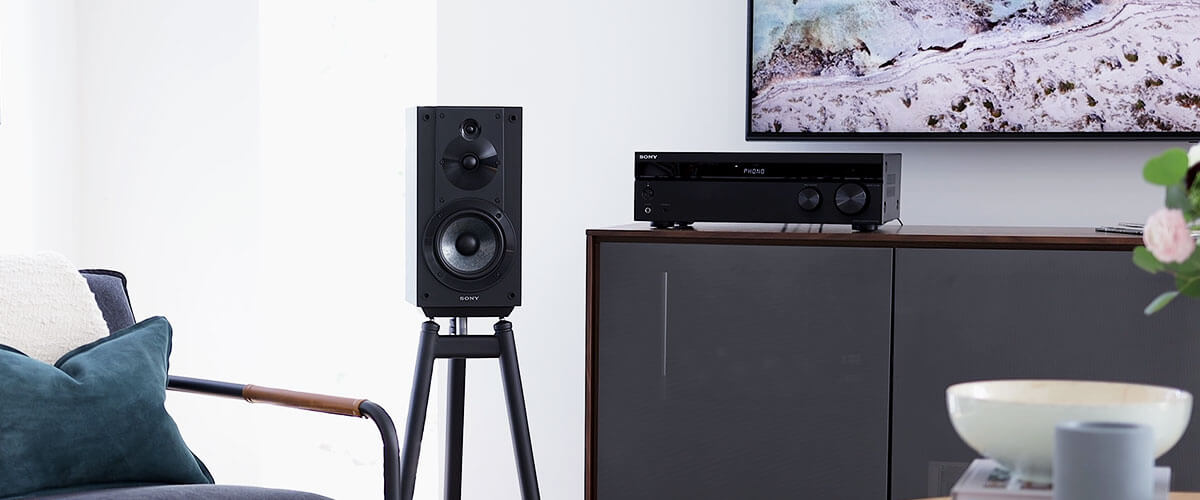
How much money should I spend on a stereo receiver?
There are a few factors to consider when determining how much to spend on a stereo receiver:
- Power output – 50-70 watts per channel is sufficient for most home stereo setups. This power range is commonly found in stereo receivers under $200. Higher wattage increases costs.
- Features – streaming options, video support, and advanced audio processing add cost. Prioritize needed features.
- Speaker efficiency – low-impedance (4-8 ohm) or power-hungry speakers may benefit from a higher wattage receiver, even if just using a stereo setup.
- Brand and build quality – higher cost units from brands like Marantz and Denon often have better components, longer warranties, and sound quality.
While you can find good value stereo receivers under $300, stepping up to the $500+ price range offers meaningful improvements in power, build quality, features, and sound that justify the investment for more discerning listeners.
Built-in Bluetooth and Wi-Fi
Most modern stereo receivers, especially over the last few years, include Bluetooth support. This allows you to wirelessly stream music from your smartphone, tablet, or computer to the receiver. Wi-Fi support is less common, though it is becoming more prevalent in newer models. Wi-Fi enables integrating the stereo receiver into your home network for multi-room streaming and smart home features.
Very low-cost and basic stereo receivers often do not have any wireless capabilities. The focus is purely on analog audio connections. For stereo receivers without wireless support, you can purchase separate add-on adapters like Bluetooth transmitters and Wi-Fi streaming boxes to add those capabilities. So, if these features are your priority as well, I’d recommend choosing from mid-range devices.
Inputs and outputs
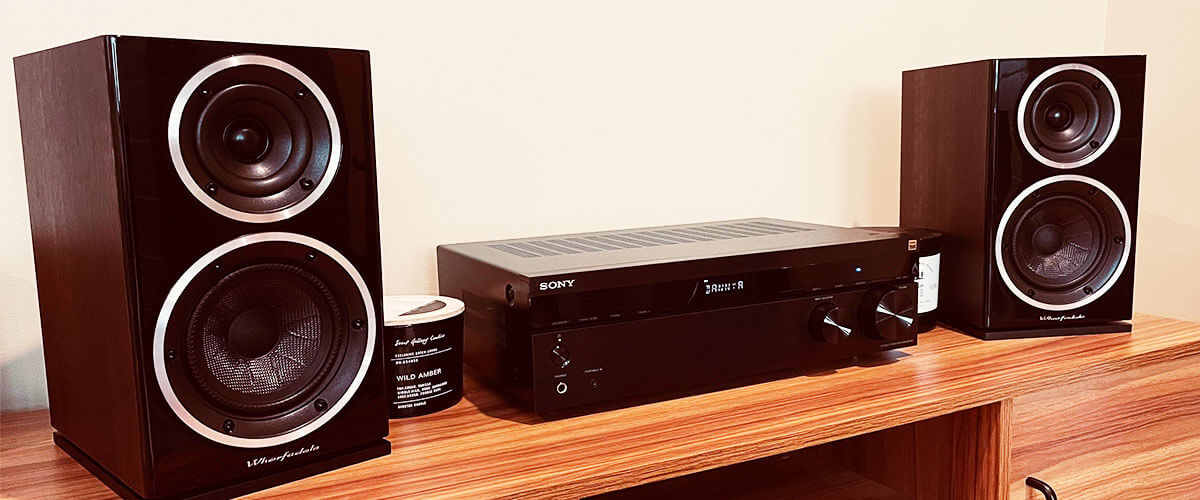
If you don’t know exactly what you might need in your stereo receiver, let me tell you what it should include. At least 2-3 pairs of RCA inputs are needed to connect analog stereo audio sources like CD players, cassette decks, etc.
Optical and coaxial digital inputs will allow you to connect digital audio sources like Blu-ray players, gaming consoles, and streaming boxes. Another important input for audiophile stereo receivers is a phono input if you want to connect a turntable directly without an external phono preamp. Finally, HDMI is a common input for top-rated stereo receivers, and having one would be useful in combination with modern TVs.
AM/FM tuner
Most stereo receivers will have analog tuners that allow you to tune into stations in your area simply by scanning through the frequencies. Preset buttons usually let you save your favorite stations for quick access.
Higher-end amplifiers also include advanced features like HD Radio support, offering improved sound quality for FM stations and the ability to view metadata like song and artist details. Some models also incorporate internet radio support via network connections.
Additionally, even basic stereo amplifiers that don’t include screens or extra capabilities besides providing amplification power still often integrate radio tuners to give you radio support when paired with passive speakers.
Best stereo receiver reviews
Marantz STEREO 70s – best overall

This retro angular styling that hearkens back to vintage Marantz receivers from the 1970s has a sturdy metal construction with an aluminum front faceplate and knobs that exude a premium feel. Large analog tuning dial and classic analog VU meters display a classic aesthetic. It weighs 23 lbs, contributing to stability and reduced vibration. As for me, this model is just an improved version of the NR1200 amplifier by Marantz.
Marantz STEREO 70s delivers 75W (8 Ohms, 20 Hz – 20 kHz, 0.08% THD), which is more than enough for small to medium-sized rooms. There’s Marantz HDAM amplification technology for wide dynamics and audio fidelity. In addition, custom toroidal transformers and high-current capacitors enhance the power supply. I wish it had a sensitivity setting to change how sensitive the volume knob is cause it took me a lot of turning to make a difference in volume. Cool? No doubt! Stereo receiver with AV receiver capabilities.
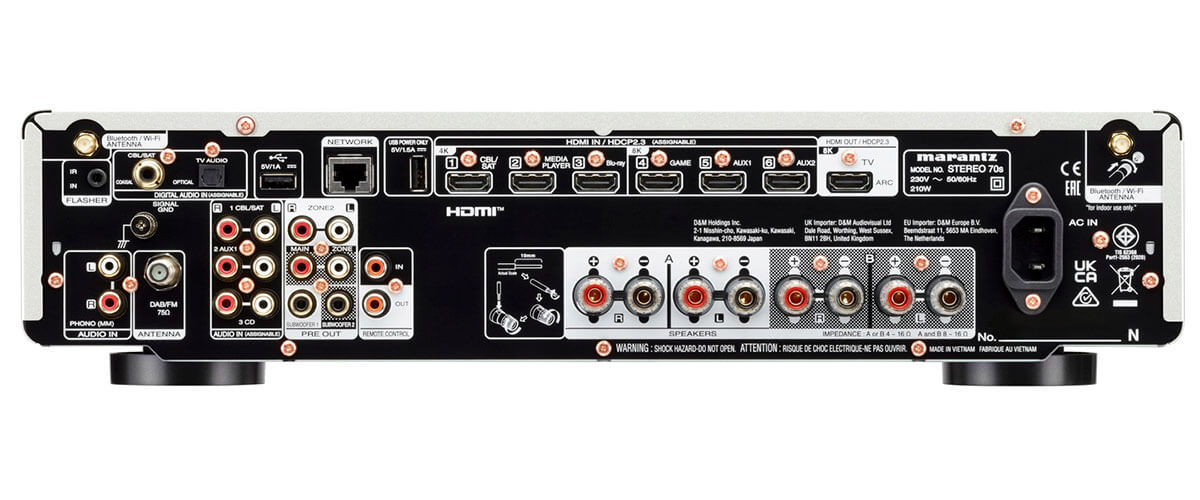
Connectivity options for this model are what indeed pleased me. 4 RCA input pairs and 1 phono input accommodate a variety of audio sources. By the way, copper-plated chassis and gold-plated RCA inputs ensure noise reduction. Subwoofer pre-out allows adding a powered sub for expanded low-end. Front 1/4″ headphone jack for private listening. The greatest part of it is 6 HDMI inputs, where 3 of them support 8K. It also offers an upscaling feature – 1080P/4K to 8K.
Smart home integration and control are additional features with which the Marantz STEREO 70s can please us. So you get Alexa, Google Voice Assistant, Apple HomePod, and JoshAi voice assistant compatibility. Plus HEOS -multiroom integration.
To make the streaming options flexible, you can use Bluetooth or Wi-Fi. The signal was good, except that sometimes Spotify inexplicably stopped playing when I used the HEOS connection. However, in the case of Apple AirPlay, I had no such problem.
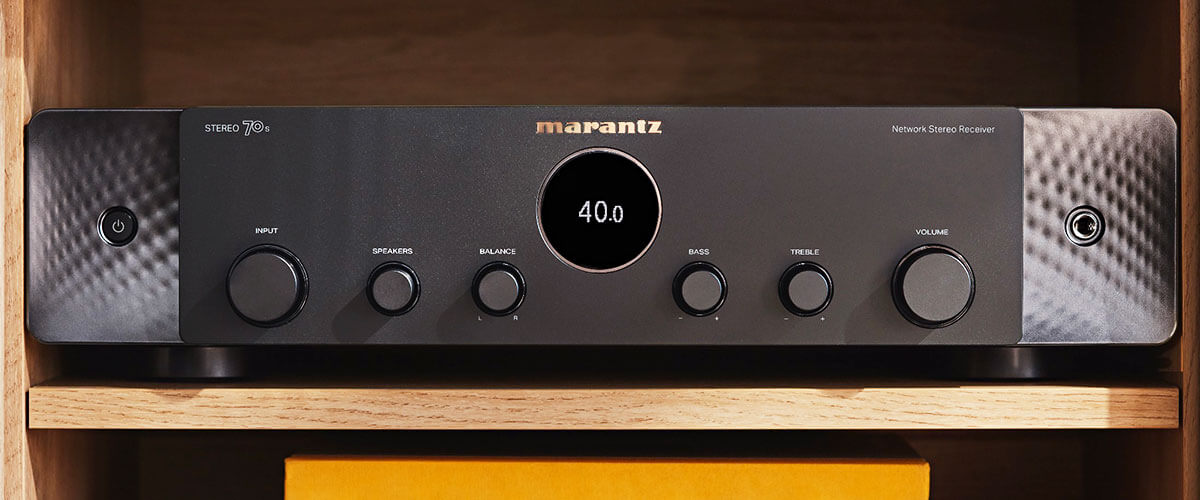
I enjoyed the warm, rich sound with articulate midrange and sparkling highs by STEREO 70s. There was excellent stereo imaging with a wide and spacious soundstage. The bass was tight and musical without bloat or muddiness. Also, I’d like to note its highly dynamic and transparent amplifier section.
The Marantz STEREO 70s is an impressive stereo receiver for listeners who want a classic Marantz retro design and analog listening experience with modern build quality and audio performance. In a word – a leader!
Key specs
- Channels: 2.1.
- Power output: 75W/8 Ohm, 100W/6 Ohm.
- HDMI inputs/outputs: 6/1.
- Video functions: 8K/60Hz, 4K/120Hz, upscaling to 8K.
- Bluetooth/Wi-Fi: yes/yes.
- Streaming services: AirPlay 2, Pandora, Spotify, SiriusXM, Amazon Music HD, Amazon Music, TIDAL, Deezer, iHeart Radio, Napster, SoundCloud, Mood Mix.
- Suppots: HDMI eARC, HDMI ARC, HDMI CEC, HDR, HLG, Dolby Vision, HDR10+, Dynamic HDR, Dolby Vision.
- Surround sound: DTS HD Master, DTS:X, DTS Neural:X, DTS Virtual:X, Dolby TrueHD, Dolby Atmos, Dolby Atmos Height Virtualization, Dolby Atmos Music, Dolby Surround, Multichannel Stereo.
Pros
- Robust analog tuning experience.
- HDAM tech for wide dynamics.
- High-quality components.
- Gold-plated RCA inputs.
- Flexible connectivity options.
Cons
- The volume knob lacks sensitivity.
- Experienced interruptions during HEOS connection.
Denon DRA-900H – also great
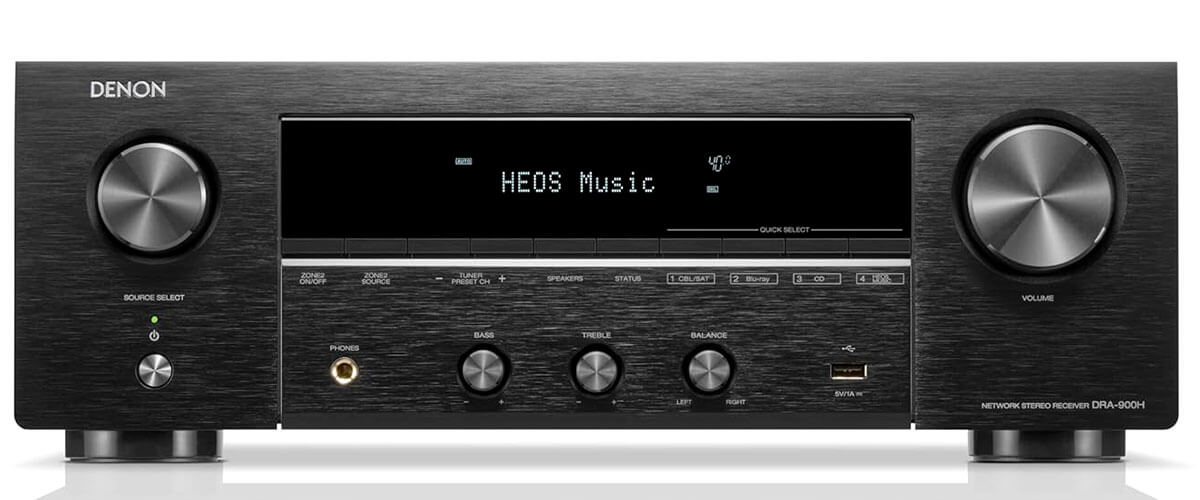
As for me, this is another best 2-channel receiver. To be honest, I like its sleek, elegant black aluminum chassis with stainless steel accents better than the design of the Marantz STEREO 70s. Its 100W (8 Ohms, 20 Hz – 20 kHz, 0.08% THD) would be plenty for most rooms of almost any size. Actually, the DRA-900H follows up on the previously released DRA-800H. As an upgraded replacement, it features several improvements over its predecessor. It has new advanced graphics with GUI, 3 x 8K HDMI inputs, and left and right channel pre-outs. Moreover, The power supply of the equipment utilizes high-purity, oxygen-free copper wiring in order to optimize and maximize power output capability and stability.
Except for the HDMI connectors, it also contains ARC connections compatible with TV audio feeds. The unit features multiple wired input options for audio – CD player input, phono input, USB port, coaxial digital audio, 2 optical inputs, and additional analog RCA connections. As you can see, connecting your favorite devices won’t be a problem. I like there are dual sub-abilities and pre-out for external amp; that’s a plus. Including a standard feature for stereo receivers like FM/AM radio, I experienced some issues, not being able to play one. There are plenty of radio stations in my area, but the reason was the antenna. So I replaced it with the one from Yamaha, with heavier gauge wire.
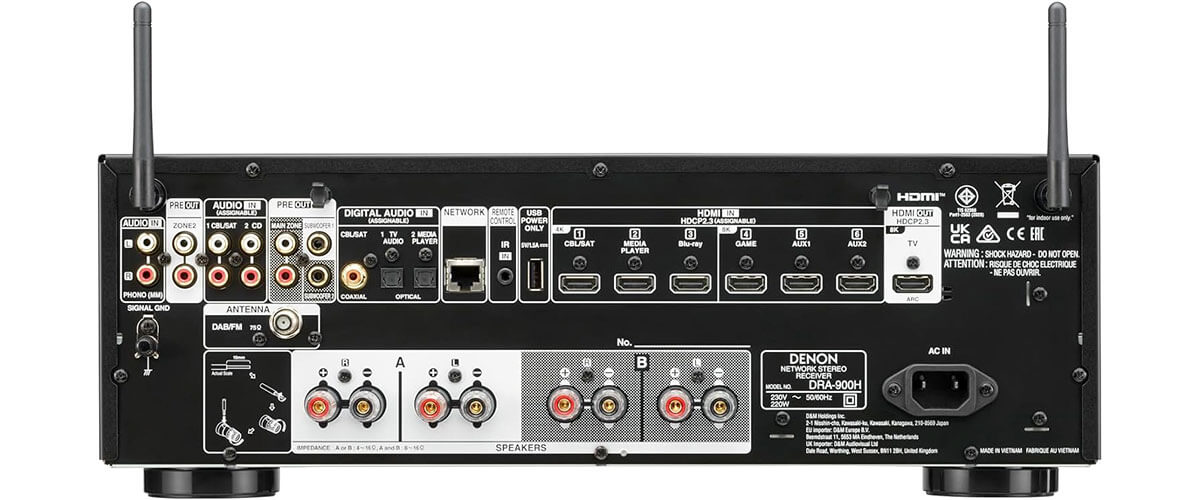
As expected for a modern device, it has integrated wireless connectivity for music streaming and smart device compatibility: Bluetooth and Wi-Fi. Additionally, Apple AirPlay 2 and Denon’s HEOS are included. It’s also equipped to operate with Sonos devices if connected with analog or digital cables. However, Sonos equipment won’t work wirelessly with the Denon unit.
The DRA-900H model provides multiple control options, including the physical remote, available mobile apps, and integrated voice assistants – Amazon Alexa, Google Assistant, and Apple Siri. In addition, Denon offers an automated guided software program called Setup Assistant to aid in the receiver’s initial setup process rather than having to manually configure every setting. It’s very useful since I found this unit to be a little tricky to set up (for newcomers, it can be a serious problem). Some of the instructions tell you how to enable functions that do not specify which buttons to press.

Sound quality is solid but more optimal when connected to 6-ohm speakers. It definitely makes vocals clearer while the background instruments come to life. My CD player also experienced greater sound, especially with the optical input. I’m not sure about its 100W, but it’s definitely not worse than Marantz STEREO 70s.
The Denon DRA-900H is a strong competitor for my leader. It offers high-quality sound and a set of HDMI connections (and more) to match the latest source devices. Yes, you may have to fiddle with the settings but trust me, it’s worth it.
Key specs
- Channels: 2.2.
- Power output: 100W/8 Ohm, 120W/6 Ohm.
- HDMI inputs/outputs: 6/1.
- Video functions: 8K/60Hz, 4K/120Hz, upscaling to 8K.
- Bluetooth/Wi-Fi: yes/yes.
- Streaming services: Airplay 2, Pandora, Spotify, Napster, SiriusXM, TIDAL, Deezer, Qobuz, Amazon Music HD, Amazon Music, TIDAL, Deezer, iHeart Radio, Napster, Soundcloud, Mood Mix.
- Supports: HDMI eARC, HDMI ARC, HDMI CEC, HDR, HLG, Dolby Vision, HDR10+, Dynamic HDR, Dolby Vision.
- Surround sound: Dolby TrueHD, Dolby Atmos, Dolby Atmos Music, Dolby Surround, Multichannel Stereo.
Pros
- High-purity oxygen-free copper wiring.
- Dual sub-abilities and pre-out for an external amp.
- Compatible with Sonos equipment.
- Wide control options.
Cons
- Issues with AM radio transmission.
- Some of the instructions are misleading.
Sony STR-DH190 – budget
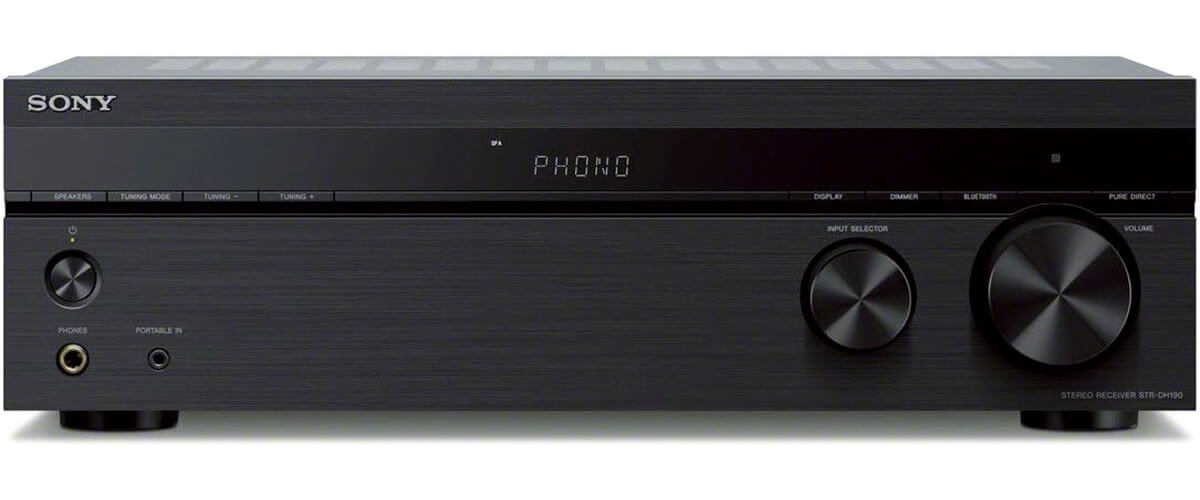
The Sony STR-DH190 stereo receiver takes a pared-down approach compared to feature-packed models like the Denon DRA-900H. As an entry-level budget receiver, the DH190 focuses on core essentials rather than lavish add-ons. This simplicity makes it ideal for casual listeners rather than audio enthusiasts.
Weighing in at a feather-light 14.7 lbs, the unit can be easily placed anywhere without dominating space. The 90W (8 Ohms, 20Hz to 20kHz, 0.09% THD) delivers clean and sufficient power without distortion for most bookshelf or compact speakers, even at high volumes. However, there are a lot of reviews, and I agree with them that the speaker connection terminals have very small openings and are not really designed for heavier gauge speaker wire. In addition, the phonograph volume is so low that the only option was to increase volume control.
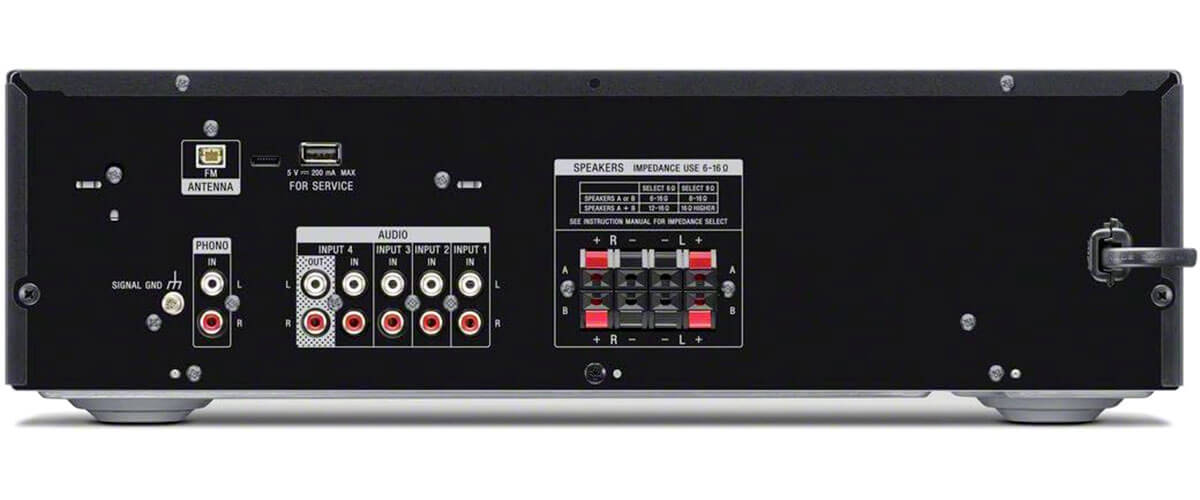
The streamlined design omits advanced connections like HDMI or Ethernet, which aren’t missed in basic setups focused on music. However, the STR-DH190 smartly includes phono inputs for turntable integration, multi-speaker outputs, and 4 RCA jacks for TVs or CD players. It has no input for optical; however, since digital-to-analog adapters are inexpensive, I think it can be left that way. Bluetooth is on board for wireless music streaming from phones and tablets. The signal was awesome, and it had a powerful range. The front line-in 3.5 port, identified as a “Portable,” is also a great feature. The included FM antenna allows accessing free radio programming. But here’s a thing: the end of the cable used to get a signal for the FM radio has almost no security and can be pulled out of the unit very easily.
STR-DH190 produces a clear, nice quality sound that is probably difficult to find in another cheap device. If you’re looking to break down the walls or prefer more expressed bass, then you probably need to spend some extra money and look elsewhere.
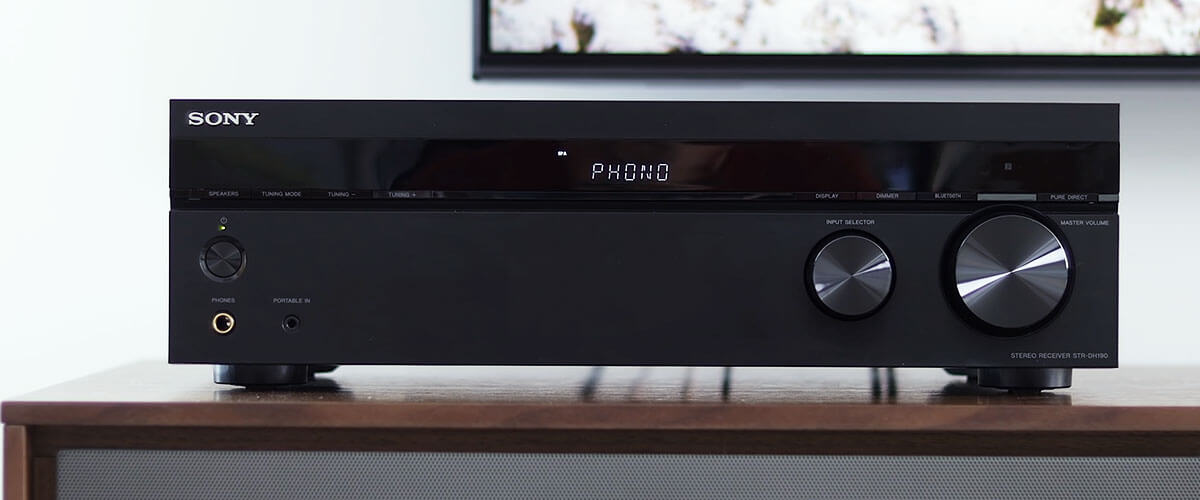
Also, note that this model offers no way to update firmware down the road. However, I confirm these limitations are reasonable trade-offs to achieve the extremely affordable price point.
In summary, the Sony STR-DH190 is the best budget stereo receiver for cost-conscious music lovers. It nails the basics like distortion-free power, phono input, multi-speaker outputs, and Bluetooth at an unbeatable value. Just don’t expect sophistication cause the STR-DH190 keeps it simple.
Key specs
- Channels: 2.0.
- Power output: 100W/8 Ohm.
- HDMI inputs/outputs: has not.
- Video functions: has not.
- Bluetooth/Wi-Fi: yes/no.
- Streaming services: has not.
- Surround sound: has not.
Pros
- Simple in setup and usage.
- Produces clear sound quality.
- Offers Bluetooth connectivity.
Cons
- Small speaker connection terminals’ opening.
- No optical input.
- No Wi-Fi connectivity.
- The cable of the FM antenna isn’t stable.
Yamaha R-N303
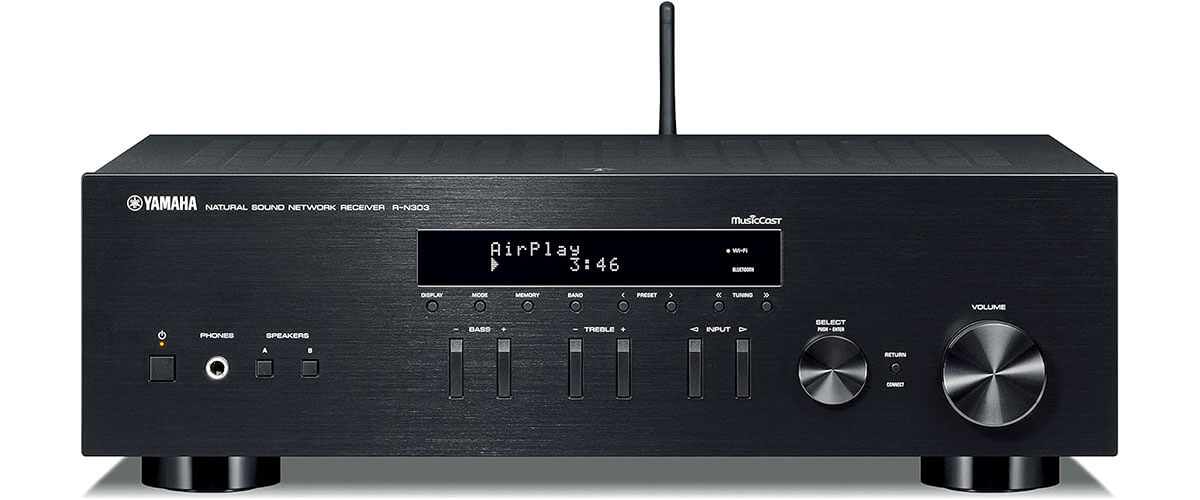
The Yamaha R-N303 is a well-regarded home stereo receiver for music that was released in 2017 but remains popular for good reason until now. With its classic retro design and sufficient 100W (8 Ohms, 40 Hz-20 kHz, 0.2% THD) power output, it has won over thousands of listeners around the world. It’s pretty much on the same level as the previously described Sony STR-DH190. In fact, I’m not sure about the declared 100W rating, but it definitely won’t disappoint you. I’m okay with the design, but I wonder why there are 4 switches instead of 2 (for the bass/treble boost and cut). In addition, I wish Yamaha included these on the remote.
As a versatile unit, the R-N303 works well as both a standalone receiver and a network streamer that can connect to higher-end amplifiers. It supports common optical, coaxial, and phono inputs. Streaming services are also accessible thanks to Bluetooth and Wi-Fi options.
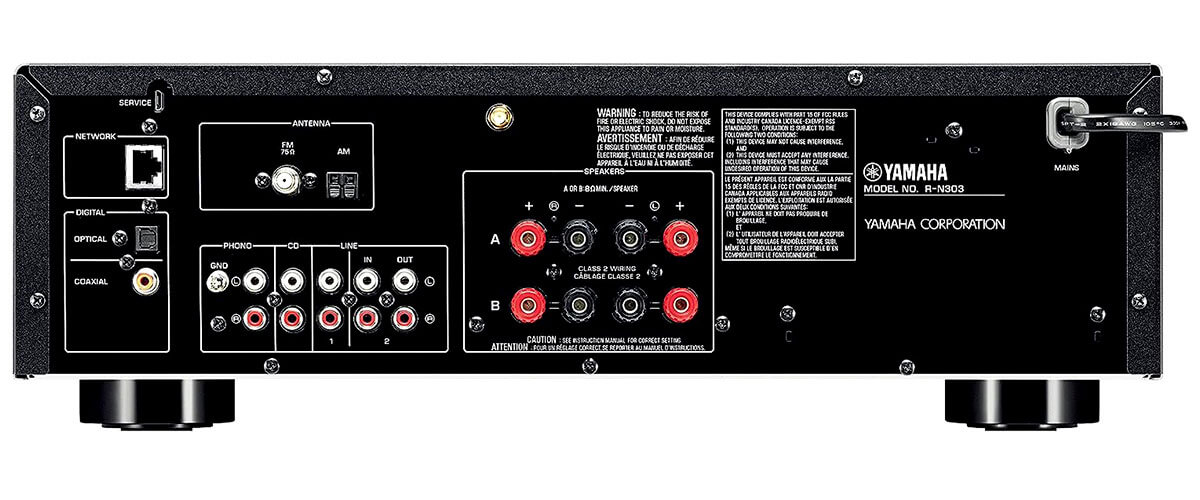
With Bluetooth, I experienced random periodic dropouts. Wi-Fi only supports the old 2.4GHz channels and not the 5GHz.
One of the desired features of the Yamaha R-N303 is MusicCast. In my case, it didn’t work very well, and I had to reconnect the amp to Wi-Fi several times, as well as streaming issues. Even though this equipment can be controlled with Alexa or Google Assistant voice commands, Amazon Music is not on the list of supported music streaming services.
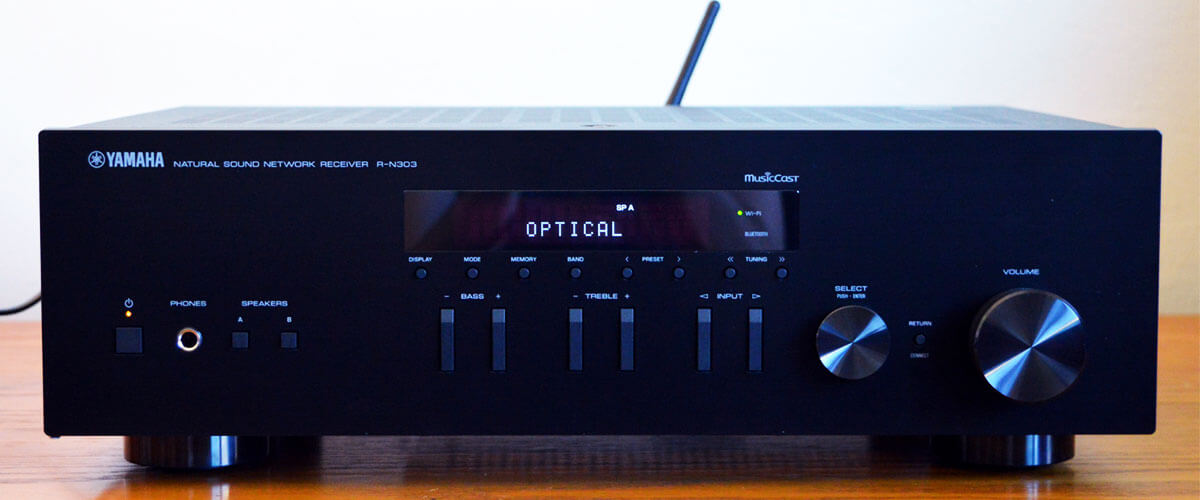
Testing the performance of R-N303, I had a detailed and clear sound quality, though slightly harsh highs. I also wish there was a front-panel stereo balance control. Also, I’ve noted that the unit takes about 50% of the volume knob to achieve a normal level of sound.
Yamaha R-N303 is almost a full-featured stereo receiver focused on music playback, with integrated streaming options and detailed audio reproduction across various formats and input sources. It positioned itself as a versatile option that is good enough for audiophiles on a budget as well.
Key specs
- Channels: 2.0.
- Power output: 140W/8 Ohm, 115W/4 Ohm.
- HDMI inputs/outputs: has not.
- Video functions: has not.
- Bluetooth/Wi-Fi: yes/yes.
- Streaming services: Spotify, TIDAL, Deezer, Napster.
- Surround sound: has not.
Pros
- Provides enough power.
- It can be connected to higher-end amplifiers.
- Offer flexible connectivity options.
- Produce detailed and clear sound.
Cons
- Bluetooth periodic dropouts occurred.
- Supports only 2.4GHz Wi-Fi.
- Amazon Music isn’t supported.
- Some issues with adjusting the volume level.
We are supported by our audience. When you purchase through links on our site, we may earn an affiliate commission at no extra cost to you.
Our newsletter
* We will never send you spam or share your email with third parties


